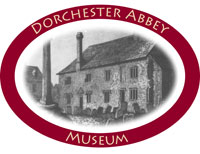Research Design
Dorchester-on-Thames has long been recognised as a key site for the study of British archaeology and history, with nationally important monuments of many periods both within the present village and in its immediate environs. Despite this there has been no archaeological excavation on anything more than a very small scale, and that all in a development led context, for many years, the last excavations of more than minimal size (themselves also in response to proposed development) having been undertaken some 35 years ago in the early 1970s. While understanding of the archaeology of many periods in the Oxford region has advanced very substantially in the last generation (eg Briggs et al. 1986; Blair 1994; Henig and Booth 2000; Booth et al. 2007; Lambrick forthcoming; OA in prep) the well-established potential of Dorchester to contribute to a wide variety of debates has not been matched by increases in the body of data with which to inform these debates, and new questions require new types of evidence to allow them to be addressed meaningfully. With these and other issues in mind, a Dorchester Research Project (see Section 2 below) was set up in 2007 with the aim of focusing attention on a number of the key questions relating to the archaeology of the Dorchester area. It was envisaged that this project would involve a variety of fieldwork approaches as well as re-assessment of earlier published and unpublished data. An overall Research Plan (see Appendix 1 below) was drawn up to provide a clear outline of the questions that might be considered and addressed in the course of future work in the Dorchester area. An initial season of fieldwork in 2007 included excavations in two separate locations (see Section 4 below). These produced very useful results, but were of relatively opportunistic character. In contrast, careful consideration of the Research Plan has underlined the view that a key area for understanding many of the most important questions relating to the development of Dorchester from the late Iron Age into the Saxon period is within the allotments which cover all the south-western quarter of the walled Roman town, an area which is a Scheduled Ancient Monument. This area has been previously examined in part in excavations carried out by Professor Frere in 1962 and 1963 (Frere 1962; 1984), with the area currently of specific interest lying adjacent to the 1963 trenches. Frere’s work indicated the archaeological potential of the area but, by virtue of its relatively small scale, raised as many questions as it provided answers. It is considered that a further relatively modest excavation in this part of Dorchester would shed considerable light on many of the outstanding questions. The present document outlines the background to the Dorchester project and the proposed work, the objectives of such work and methodologies for achieving these objectives.



